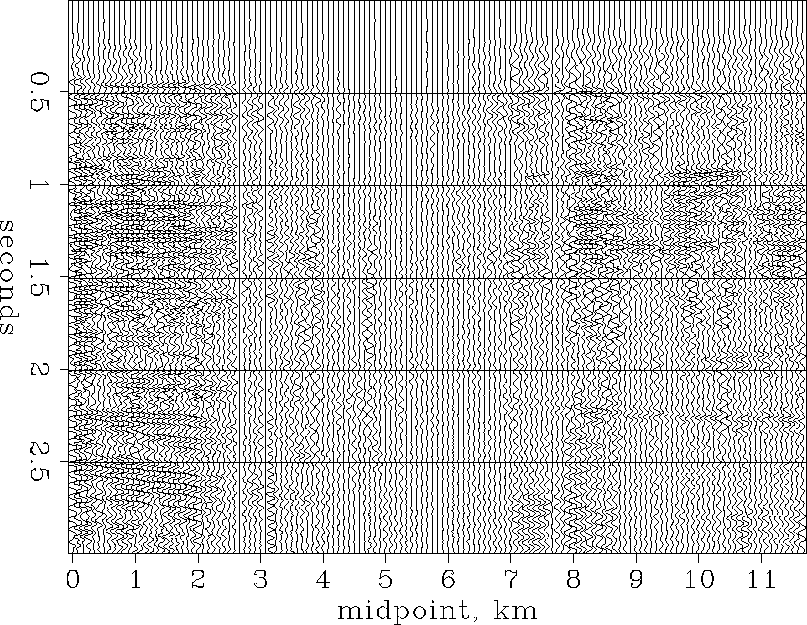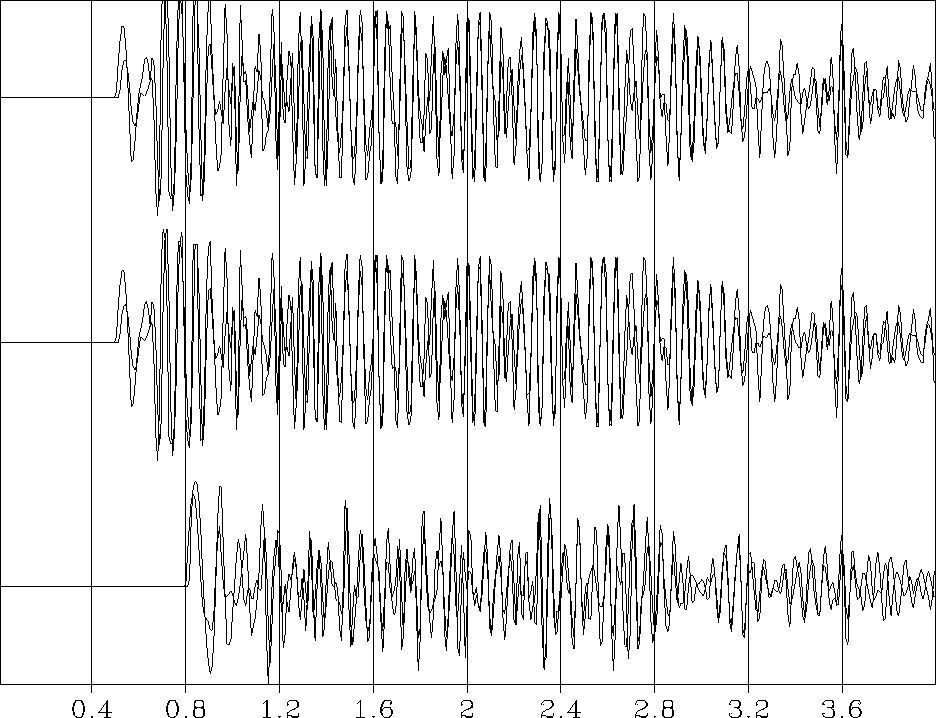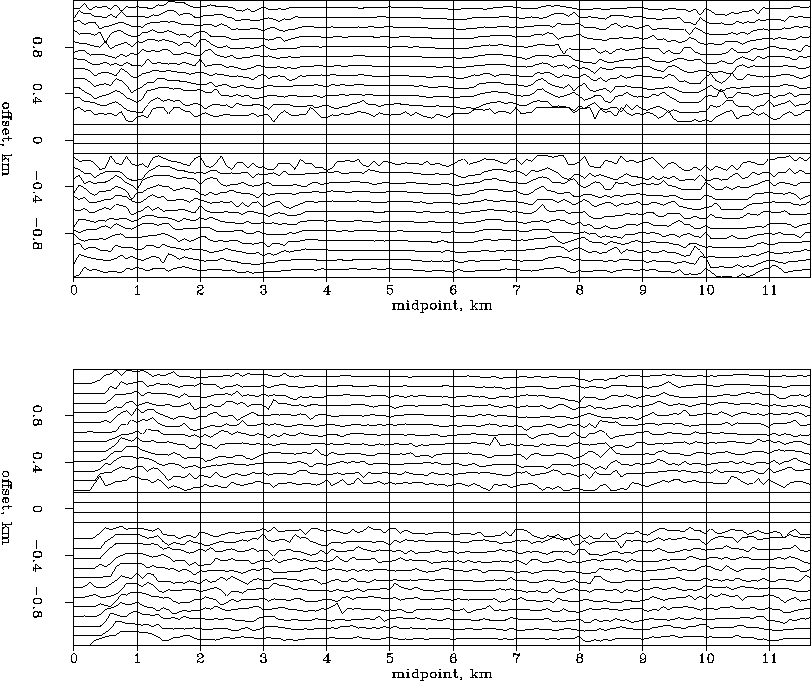 |
Figure 25 Constant-offset section from the Central Valley of California. (Chevron)
The principle of reciprocity says that the same seismogram should be recorded if the locations of the source and geophone are exchanged. A physical reason for the validity of reciprocity is that no matter how complicated a geometrical arrangement, the speed of sound along a ray is the same in either direction.
Mathematically, the reciprocity principle arises because the physical equations of elasticity are self adjoint. The meaning of the term self adjoint is illustrated in FGDP where it is shown that discretized acoustic equations yield a symmetric matrix even where density and compressibility are space variable. The inverse of any such symmetric matrix is another symmetric matrix called the impulse-response matrix. Elements across the matrix diagonal are equal to one another. Each element of any pair is a response to an impulsive source. The opposite element of the pair refers to the interchanged source and receiver.
A tricky thing about the reciprocity principle is the way antenna patterns must be handled. For example, a single vertical geophone has a natural antenna pattern. It cannot see horizontally propagating pressure waves nor vertically propagating shear waves. For reciprocity to be applicable, antenna patterns must not be interchanged when source and receiver are interchanged. The antenna pattern must be regarded as attached to the medium.
I searched our data library for split-spread land data that would illustrate reciprocity under field conditions. The constant-offset section in Figure 25 was recorded by vertical vibrators into vertical geophones.
 |
The survey was not intended to be a test of reciprocity, so there likely was a slight lateral offset of the source line from the receiver line. Likewise the sender and receiver arrays (clusters) may have a slightly different geometry. The earth dips in Figure 25 happen to be quite small although lateral velocity variation is known to be a problem in this area.
In Figure 26, three seismograms were plotted on top of their reciprocals.
 |
Pairs were chosen at near offset, at mid range, and at far offset. You can see that reciprocal seismograms usually have the same polarity, and often have nearly equal amplitudes. (The figure shown is the best of three such figures I prepared).
Each constant time slice in Figure 27 shows the reciprocity of many seismogram pairs.
 |
Midpoint runs horizontally over the same range as in Figure 25. Offset is vertical. Data is not recorded near the vibrators leaving a gap in the middle. To minimize irrelevant variations, moveout correction was done before making the time slices. (There is a missing source that shows up on the left side of the figure). A movie of panels like Figure 27 shows that the bilateral symmetry you see in the individual panels is characteristic of all times. Notice however that there is a significant departure from reciprocity on the one-second time slice around midpoint 120.
In the laboratory, reciprocity can be established to within the accuracy of measurement. This can be excellent. (See White's example in FGDP). In the field, the validity of reciprocity will be dependent on the degree that the required conditions are fulfilled. A marine air gun should be reciprocal to a hydrophone. A land-surface weight-drop source should be reciprocal to a vertical geophone. But a buried explosive shot need not be reciprocal to a surface vertical geophone because the radiation patterns are different and the positions are slightly different. Fenati and Rocca [1984] studied reciprocity under varying field conditions. They reported that small positioning errors in the placement of sources and receivers can easily create discrepancies larger than the apparent reciprocity discrepancy. They also reported that theoretically reciprocal experiments may actually be less reciprocal than presumably nonreciprocal experiments.
Geometrical complexity within the earth does not diminish the applicability of the principle of linearity. Likewise, geometrical complexity does not reduce the applicability of reciprocity. Reciprocity does not apply to sound waves in the presence of wind. Sound goes slower upwind than downwind. But this effect of wind is much less than the mundane irregularities of field work. Just the weakening of echoes with time leaves noises that are not reciprocal. Henceforth we will presume that reciprocity is generally applicable to the analysis of reflection seismic data.